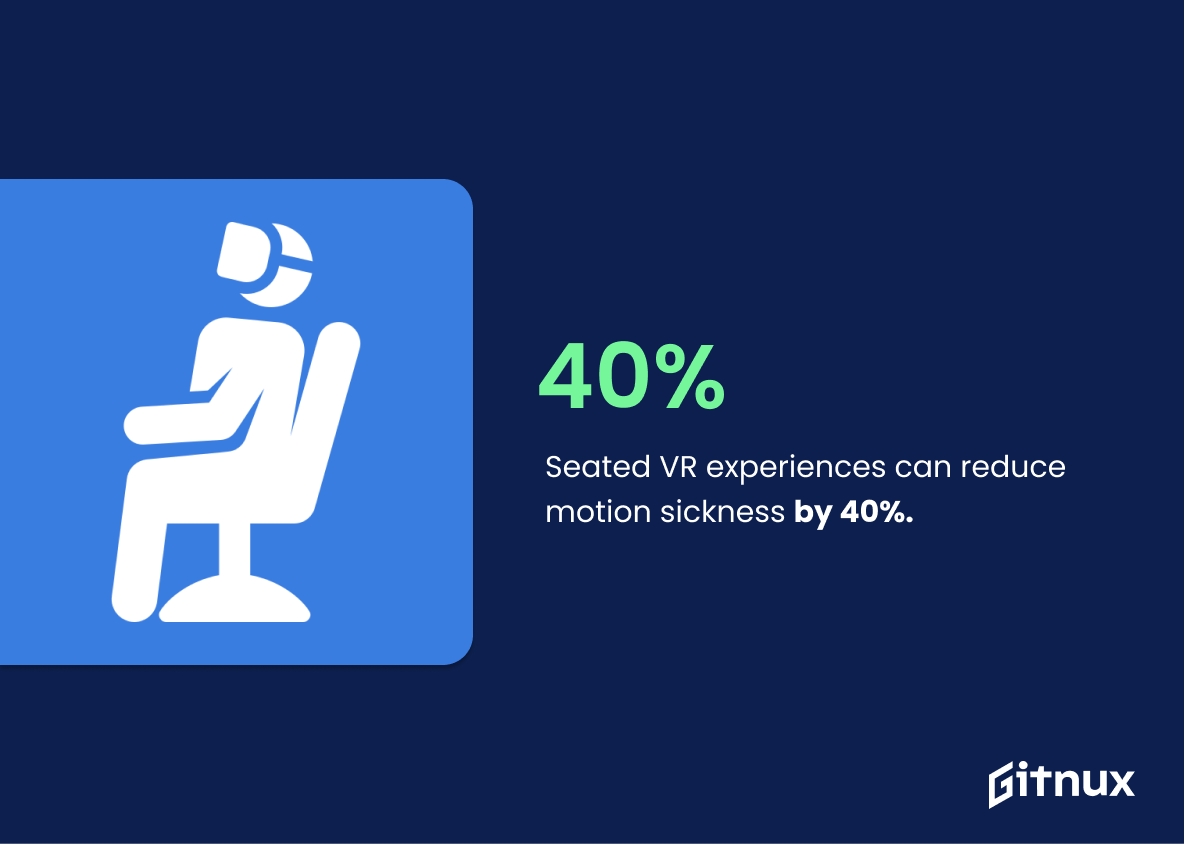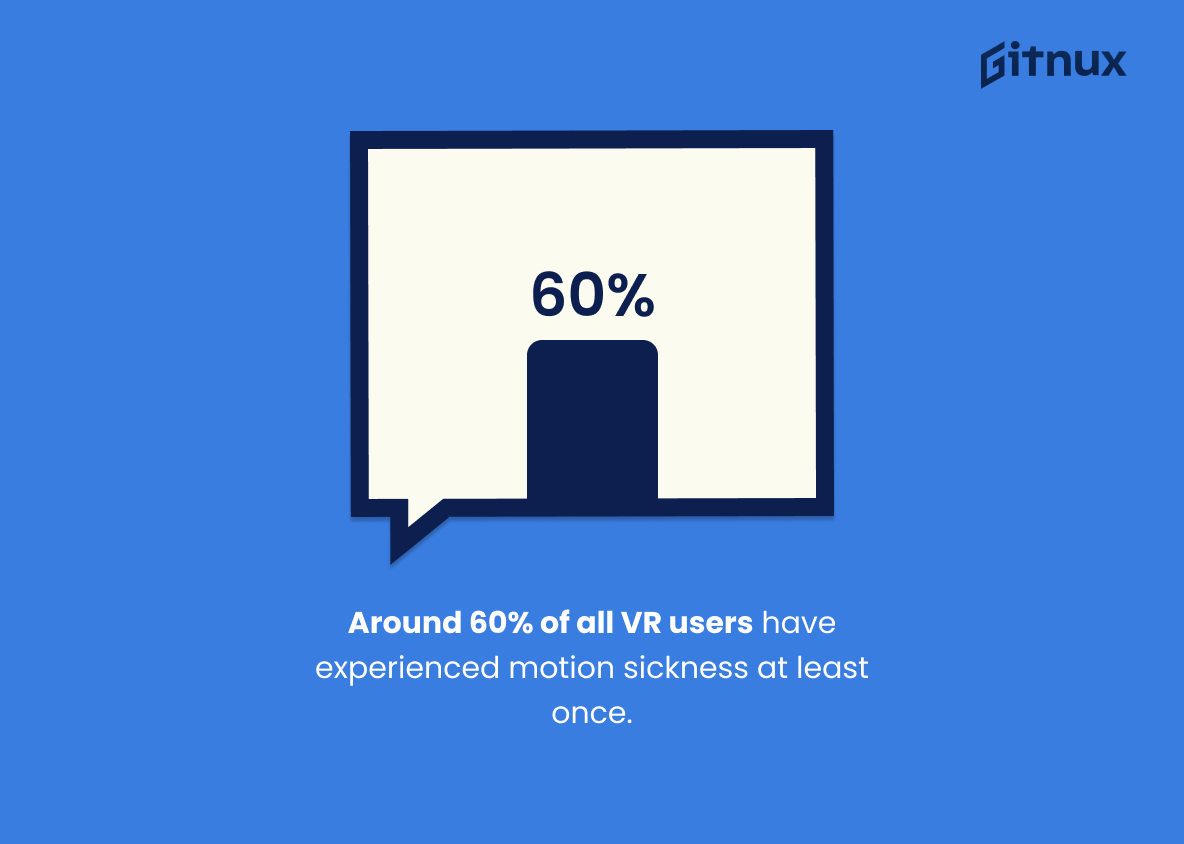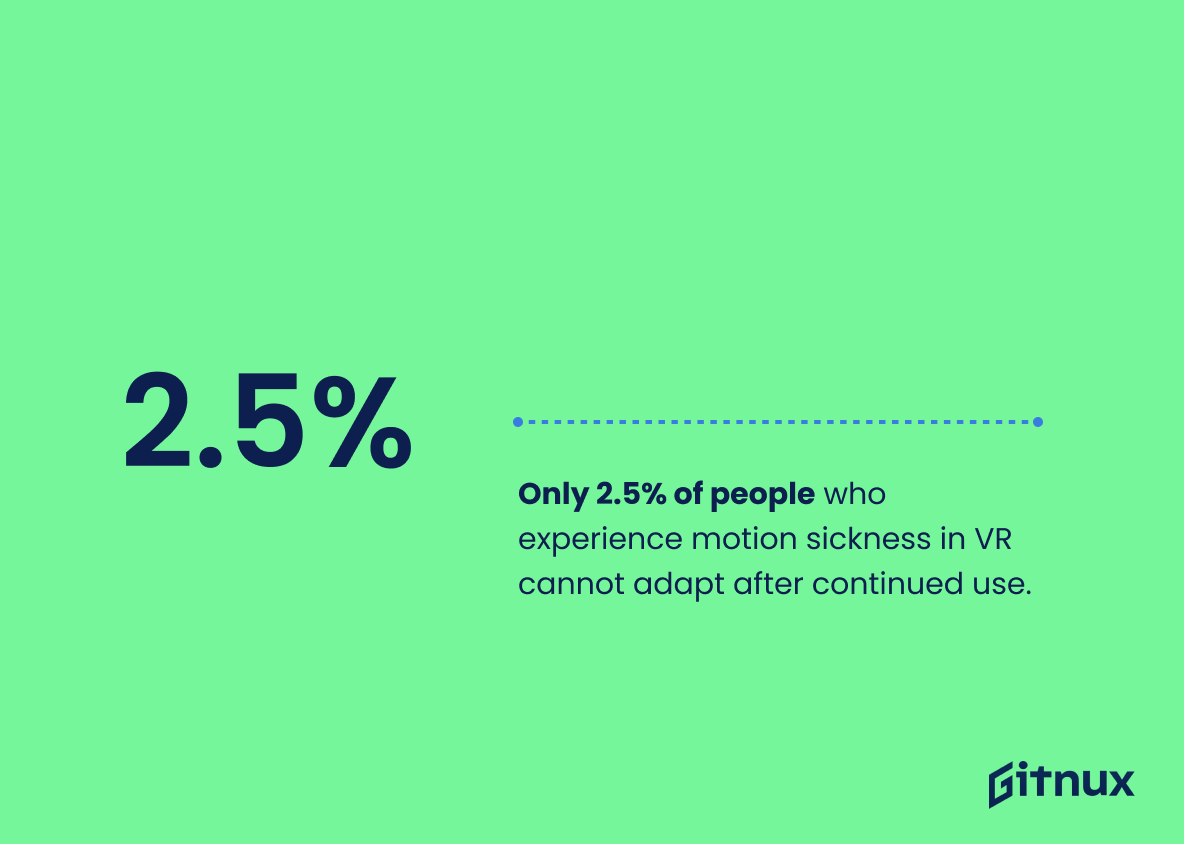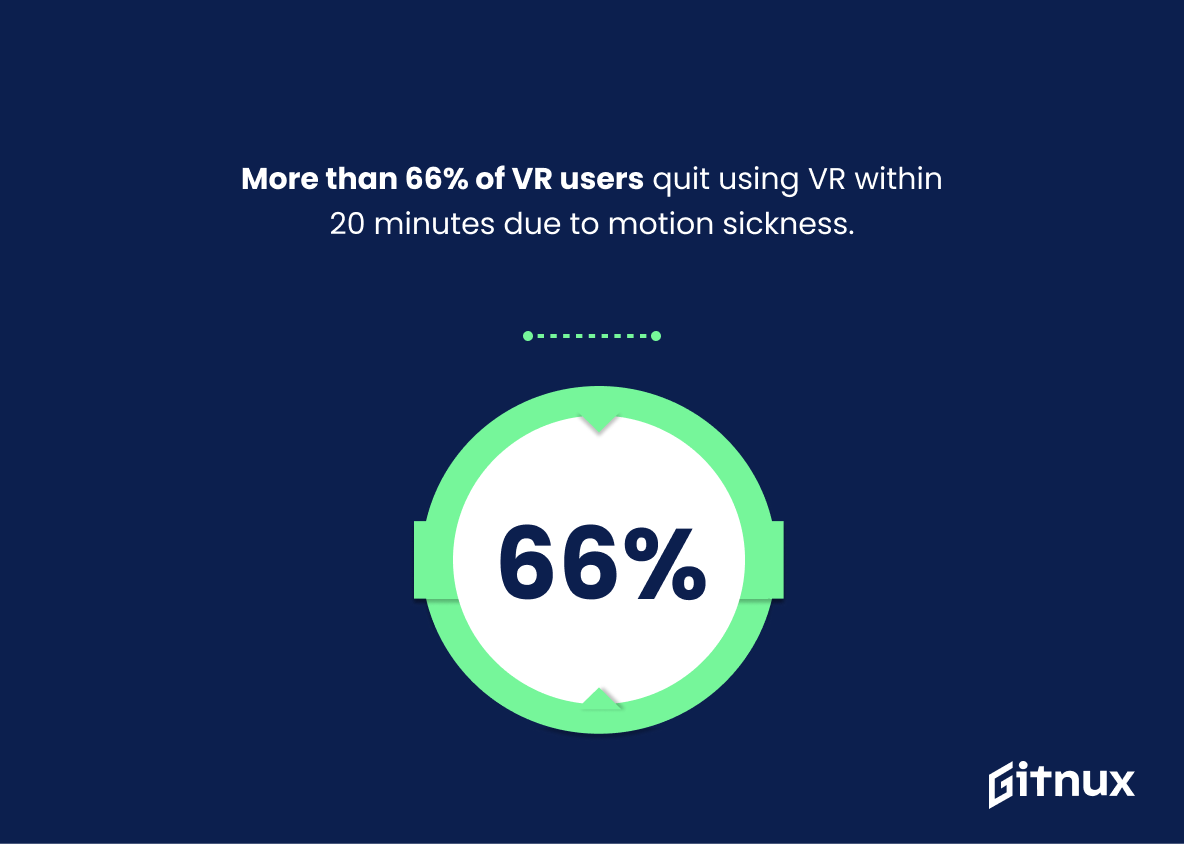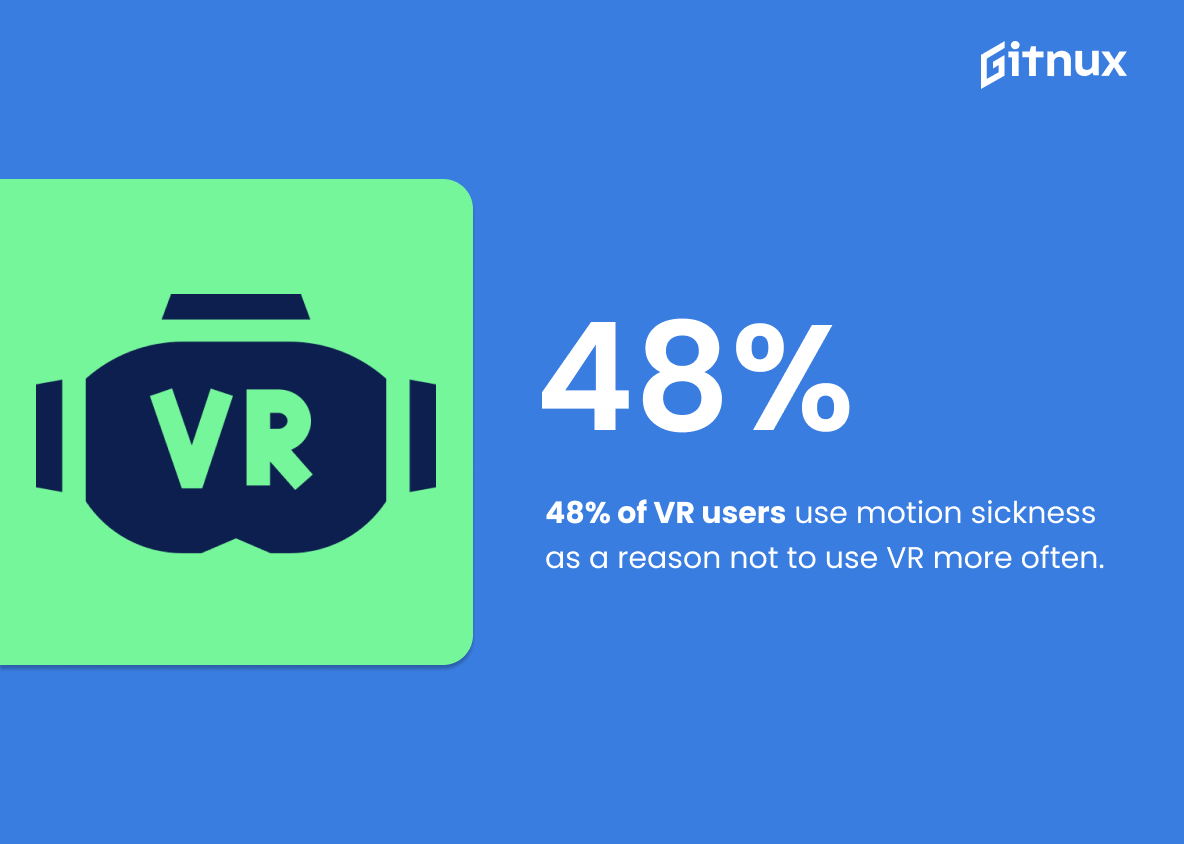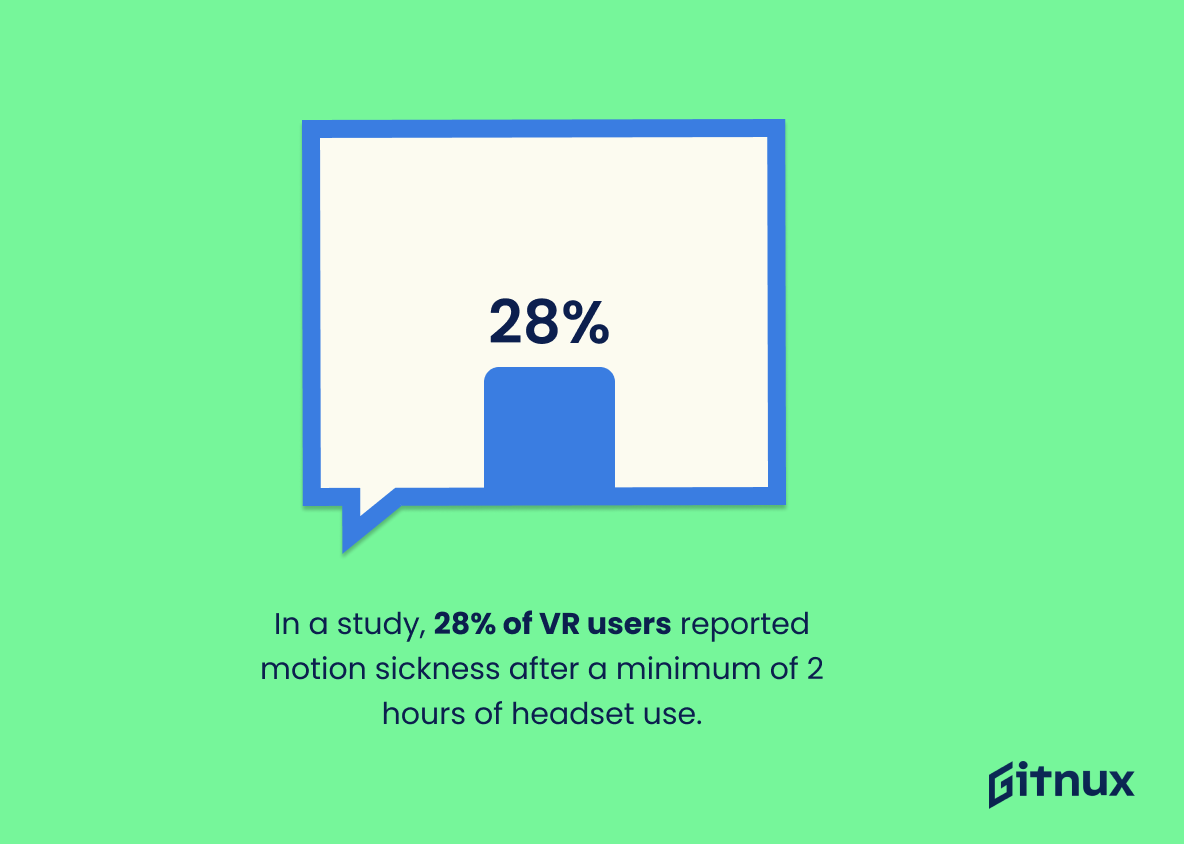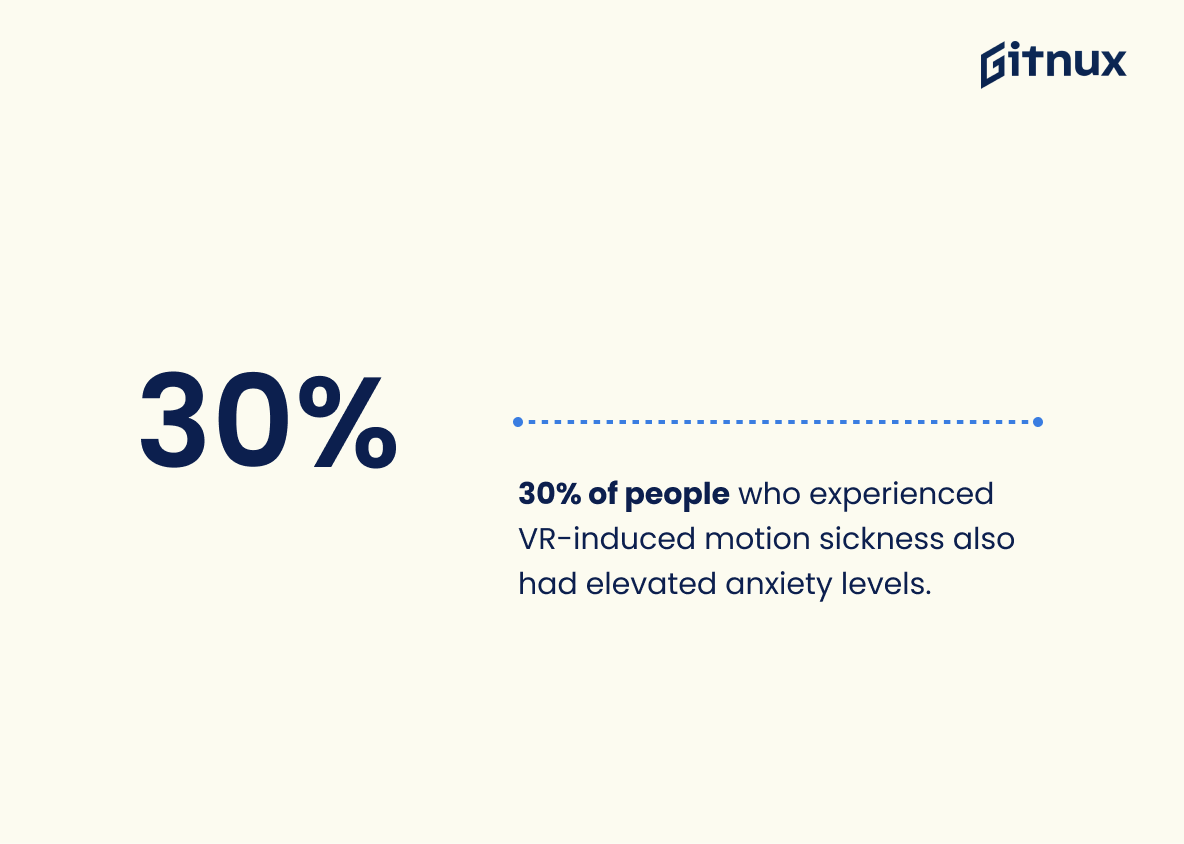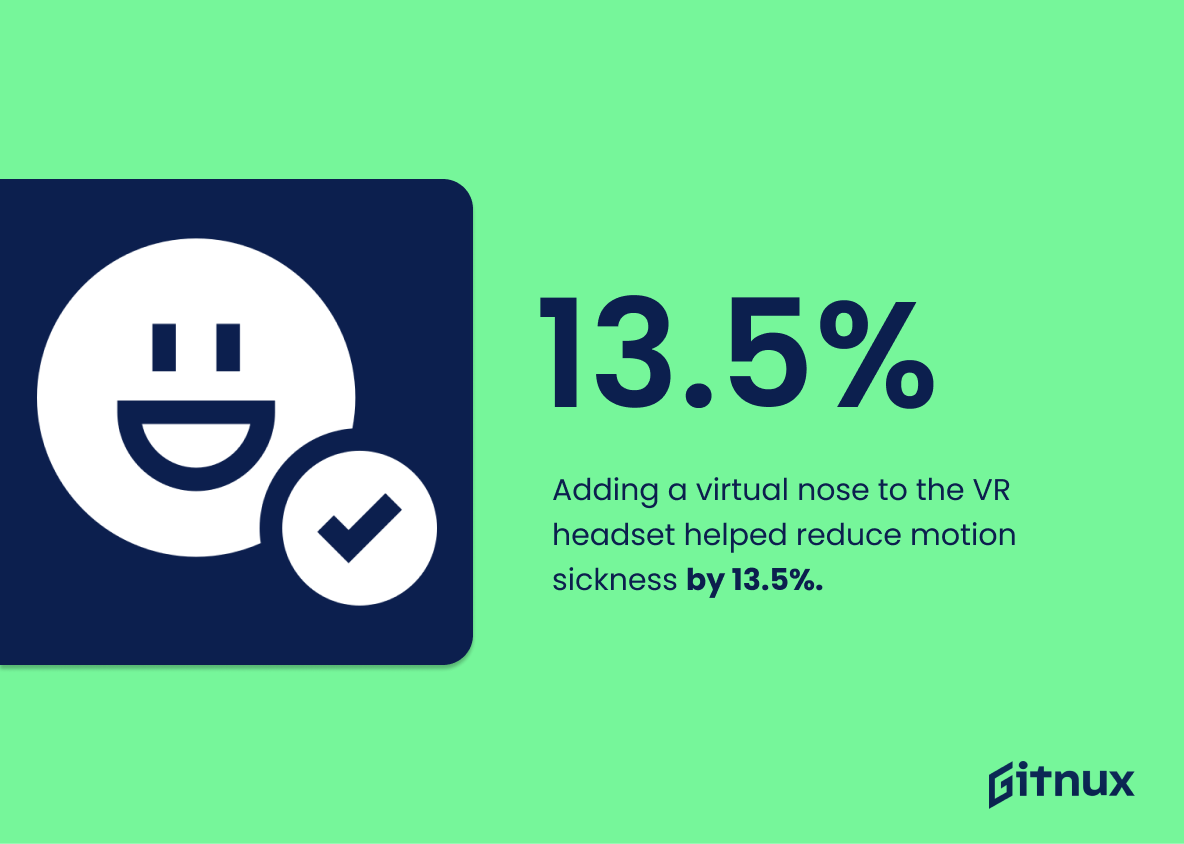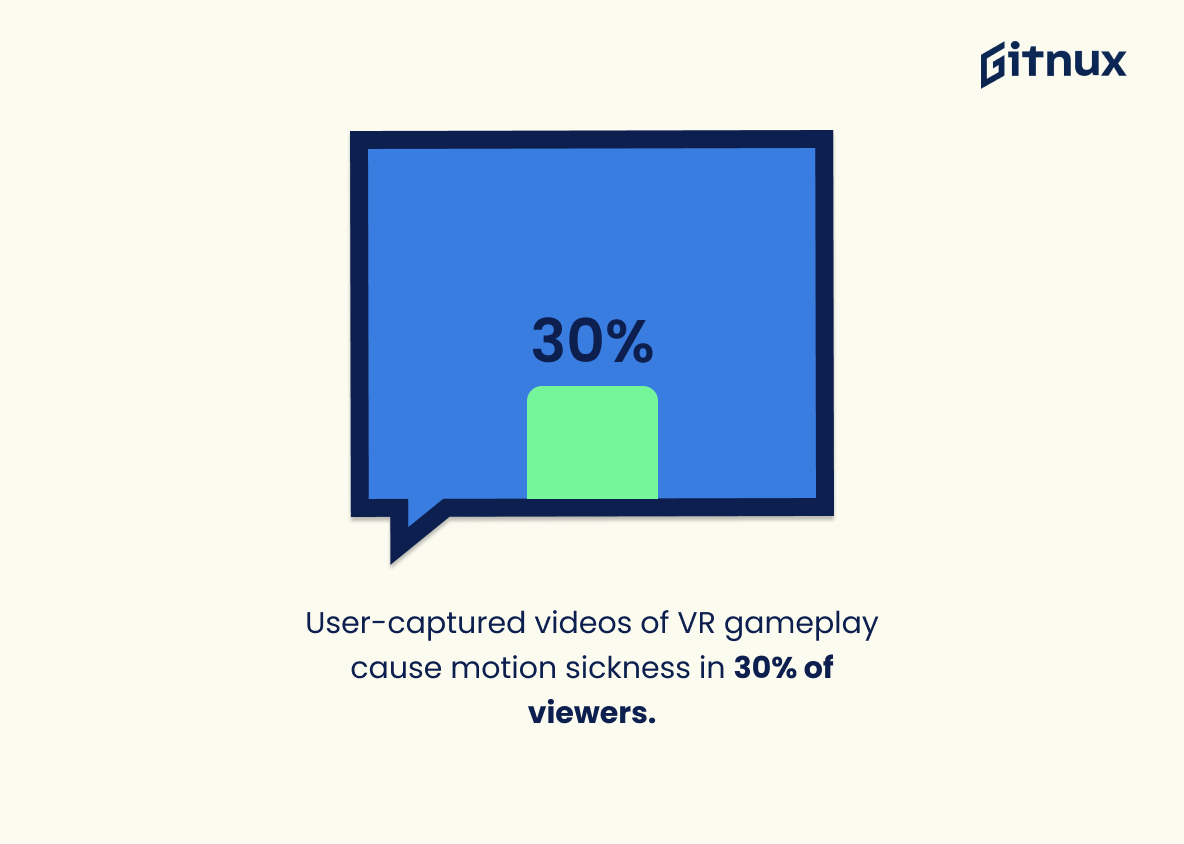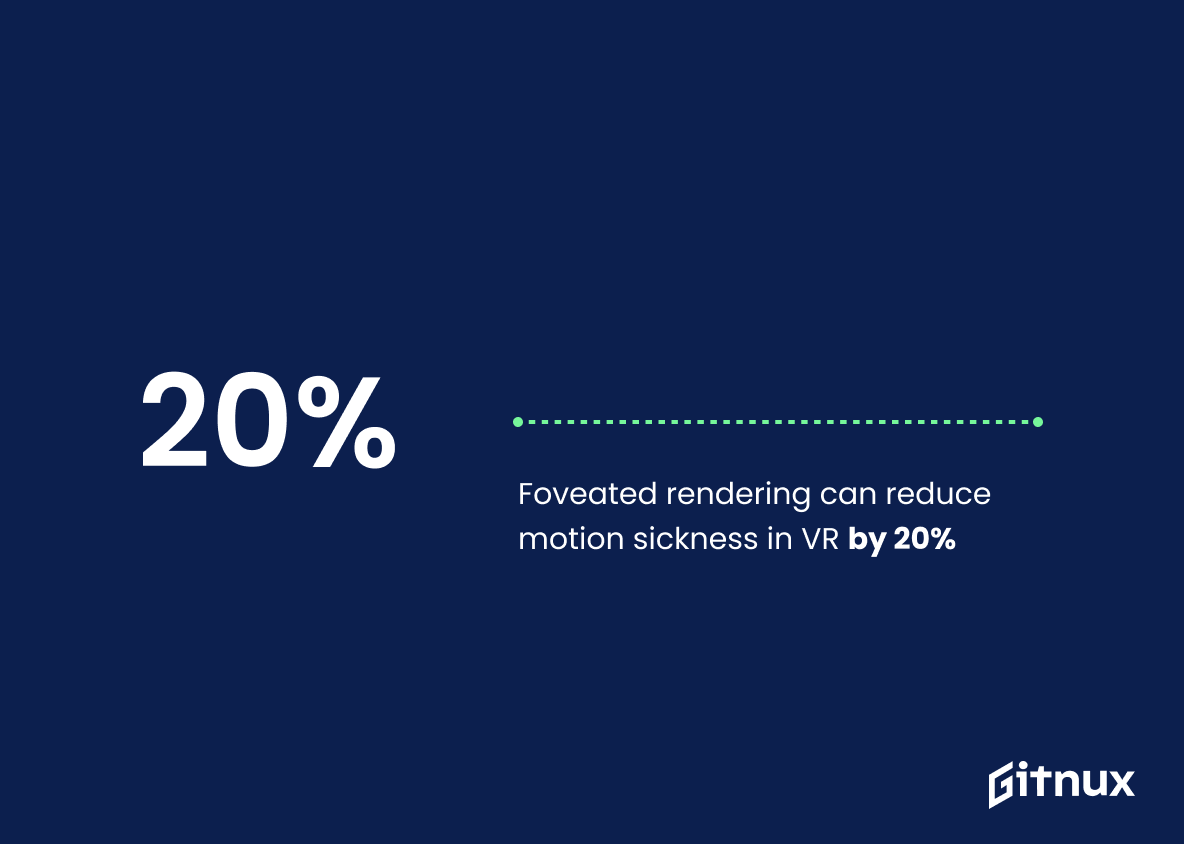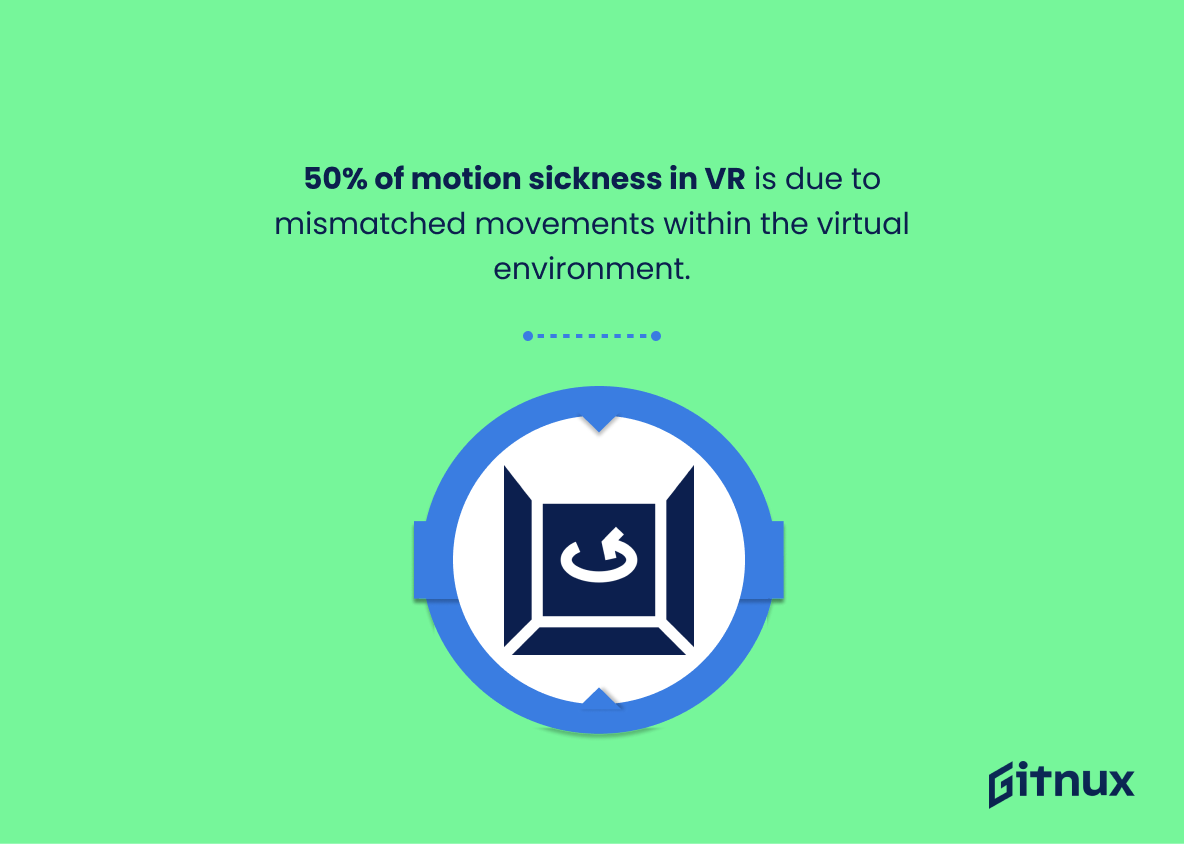GITNUX MARKETDATA REPORT 2024
Must-Know Vr Motion Sickness Statistics [Current Data]
In this post, we explore a comprehensive collection of statistics related to VR-induced motion sickness. From the percentage of users affected to factors influencing susceptibility and potential alleviation methods, these statistics shed light on the prevalence and impact of motion sickness in the realm of virtual reality.
Statistic 1
"25% to 40% of people who use VR headsets experience motion sickness."
Statistic 2
"As high as 80% of women experience motion sickness when using VR."
Statistic 3
"Seated VR experiences can reduce motion sickness by 40%."
Statistic 4
"Around 60% of all VR users have experienced motion sickness at least once."
Statistic 5
"Only 2.5% of people who experience motion sickness in VR cannot adapt after continued use."
Statistic 6
"The risk of motion sickness decreases with age – younger people are more likely to experience it."
Statistic 7
"More than 66% of VR users quit using VR within 20 minutes due to motion sickness."
Statistic 8
"48% of VR users use motion sickness as a reason not to use VR more often."
Statistic 9
"In a study, 28% of VR users reported motion sickness after a minimum of 2 hours of headset use."
Statistic 10
"30% of people who experienced VR-induced motion sickness also had elevated anxiety levels."
Statistic 11
"VR sickness is more common in open-world VR games (68%), compared to rail-based VR games (27%)."
Statistic 12
"68% of users who reported motion sickness felt better within 15 minutes after stopping the VR experience."
Statistic 13
"Adding a virtual nose to the VR headset helped reduce motion sickness by 13.5%."
Statistic 14
"User-captured videos of VR gameplay cause motion sickness in 30% of viewers."
Statistic 15
"Foveated rendering can reduce motion sickness in VR by 20%"
Statistic 16
"A study found that 61% of adults aged 18-34 felt motion sickness during VR experiences."
Statistic 17
"50% of motion sickness in VR is due to mismatched movements within the virtual environment."
Statistic 18
"Cyberith’s Virtualizer, an omnidirectional treadmill, reduced motion sickness by 23% in a study."
Sources
... Before You Leave, Catch This! 🔥
Your next business insight is just a subscription away. Our newsletter The Week in Data delivers the freshest statistics and trends directly to you. Stay informed, stay ahead—subscribe now.
